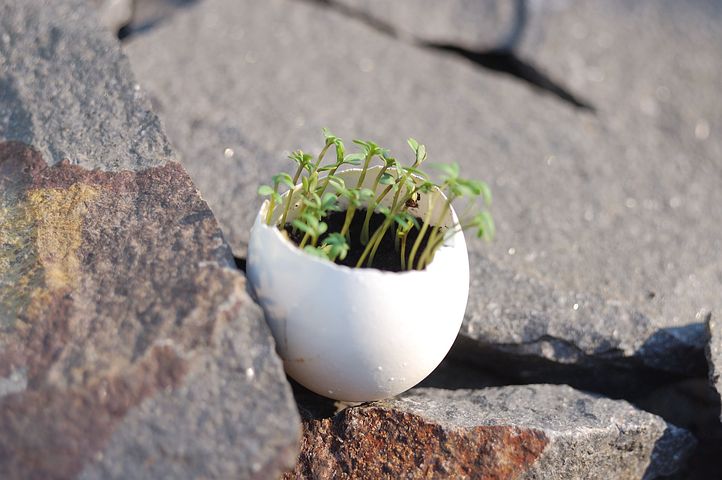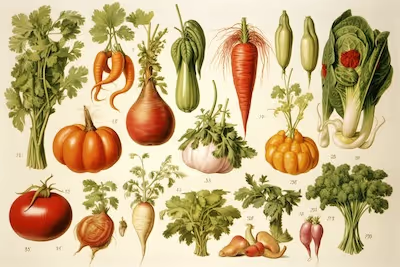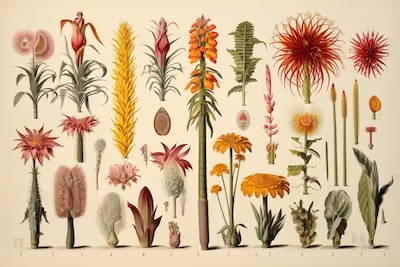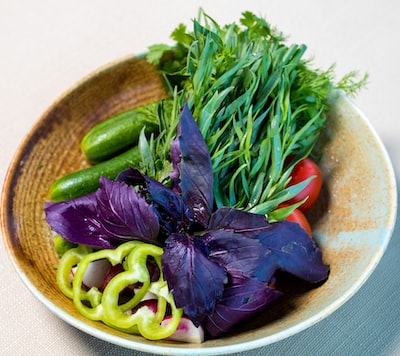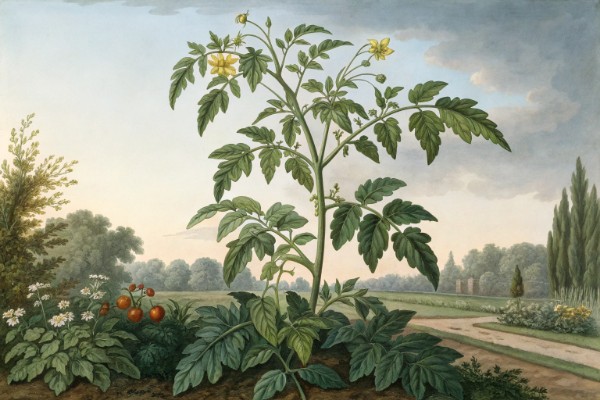Zone 5 Planting Guide: Essential Steps for a Healthy Garden

Zone 5 planting guide
Check your zone, grab your spade, and get growing—this Zone 5 planting guide shows you exactly what to plant, when to plant it, and how to keep it thriving. Short summers and frost-prone winters mean careful timing makes all the difference, especially in Zone 5 gardens. With a bit of planning and the right varieties, your garden can bloom wildly beyond expectation—read on and cultivate your oasis.
Cheatsheet: Zone 5 Planting Steps for Success
🗓️ Prime Planting Windows
- Last frost: April 25–May 15 (avg. 28°F/-2°C)
- Start cool crops 2-4 weeks before last frost (peas, spinach, kale)
- Tender crops go in after frost risk (tomatoes, peppers, beans)
- Growing season: ~150 days
🧑🌾 Soil Prep & Enrichment
- Test pH: Aim for 6.2–6.8
- Compost new beds: 2" (5cm) layer
- Use mulch (straw, wood chip) to retain 25% more moisture
- Turn soil to 8" (20cm); remove rocks/weeds
🌱 Plant Choices for Zone 5
- Top veggies: tomato, carrot, lettuce, broccoli, onion
- Herbs: chives, parsley, thyme, sage
- Edible perennials: asparagus, rhubarb, strawberry
- Cut flowers: zinnia, sunflower, peony, tulip
💧 Water, Feed & Protect
- Irrigate 1" (2.5cm) a week minimum
- Feed every 3-4 weeks: organic fertilizer or compost tea
- Stake tall crops (tomato, pepper, sunflower)
- Rotate crops yearly to block disease
🧰 Tools & Products You'll Need
- Spade, fork, hand trowel, hoe, rake
- Seed trays, row covers, tomato cages
- Compost bin or bags
- Soil thermometer
- pH test kit
- Mulch (straw or leaf)
🌿 Self-Sufficiency & Nutrition
- Grow 50+ lbs (23kg) produce in 100 sq ft (9m²)
- Fresh homegrown food: higher vitamin & mineral content
- Herbs support immunity & flavor
- Test and prepare soil
- Schedule plantings by frost date
- Install supports, sow seeds
- Water, mulch, and feed plants
- Harvest when ripe
I keep a paper calendar, a soil thermometer, and a stubborn streak, and that trio has carried me through a lot of spring gambles in Zone 5. This Zone 5 planting guide distills what actually works when the thaw teases and the sky lies.
Zone 5 winters typically bottom out at -20 to -10 F (-29 to -23 C), which shapes every move we make. Last frost often lands between mid April and mid May, and first frost shows up around mid October, though NOAA normals vary by locality.
“USDA Zone 5 minimums run -20 to -10 F (-29 to -23 C),” USDA Plant Hardiness Zone Map.
I plant by soil temperature, not the page on my calendar. A 10 dollar probe saves both seed and sanity.
- Peas: 40 F (4 C), spinach: 35 to 40 F (2 to 4 C), lettuce: 40 F (4 C).
- Beets and carrots: 50 F (10 C), potatoes: 45 to 50 F (7 to 10 C).
- Corn and beans: 60 F (16 C), cucurbits and sweet potatoes: 70 F (21 C).
Extension tables from Minnesota, Iowa State, and Ohio State align with these ranges. My notes match them after a decade of trials.
South-facing brick warms tomatoes like a stove, while a low swale chills a bed into May. I map where snow melts first and where it lingers, then plant heat lovers in the former and brassicas in the latter.
Windbreaks matter. A simple picket fence cut my spring wind by half and bumped soil temps 3 F (1.5 C) on the leeward side.
I chase structure, not just nutrients. A handful that crumbles when squeezed tells me I have tilth, while a greasy ribbon screams compaction.
Cornell recommends vegetable soils around 4 to 8 percent organic matter, and I aim for 5 percent. My beds that test near 6 percent hold moisture during July heat without going sour.
“Most vegetable soils perform best at 4 to 8 percent organic matter,” Cornell Soil Health Lab.
Target pH 6.2 to 6.8 for mixed veg, blueberries near 4.5 to 5.2, and asparagus closer to 6.5 to 7. I lime only with a soil test in hand, then retest after one season.
Biochar at 5 to 10 percent by volume blended with finished compost has helped me keep nutrients from leaching during our spring rains. Cornell’s work on char mirrors what I see in steadier potassium and a modest pH lift.
I lean on phenology because plants read the weather better than I do. When lilacs leaf out, I plant potatoes, and when oak leaves reach squirrel ear size, I seed sweet corn.
“Plant corn when oak leaves are the size of a squirrel’s ear,” traditional cue echoed by extension phenology guides.
Forsythia bloom lines up with soil warm enough for preemergent crabgrass control on paths. Apple petal fall tells me to deploy my first codling moth trap.
Row cover in the 0.5 oz class buys 2 to 4 F (1 to 2 C), while 1.0 to 1.2 oz can add 6 to 8 F (3 to 4 C) at night according to multiple university trials. I reserve the heavier fabric for hard frosts and vent early on sunny mornings.
Low tunnels of 9 gauge wire with clear poly can push cool crops 3 weeks earlier. I have overwintered ‘Red Russian’ kale in Zone 5 with a double layer, one poly and one fabric, and a deep straw skirt.
Peak season vegetables want roughly 1 inch of water per week, about 25 mm, adjusted for rain and soil type. Drip irrigation with a 0.5 gph emitter grid gives even delivery and keeps foliage dry.
Mulch conserves 25 to 50 percent of water by throttling evaporation according to UC and USDA sources. I log fewer blossom end rot incidents when consistent drip meets a 2 inch (5 cm) layer of shredded leaves.
- Very early, soil 40 F (4 C): peas, spinach, mache, arugula, radish, onions, shallots, fava beans.
- Early spring, soil 45 to 50 F (7 to 10 C): carrots, beets, potato sets, cabbage, broccoli, kale, Swiss chard.
- After last frost, soil 60 F (16 C): bush and pole beans, sweet corn, cucumbers, summer squash.
- Warmest window, soil 70 F (21 C): tomatoes, peppers, eggplant, melons, winter squash, sweet potatoes.
- Late summer for fall harvest: spinach, lettuce, radish, turnips, kohlrabi, Chinese cabbage, cilantro.
Transplant tomatoes when nights sit above 50 F (10 C) for a week. I hold peppers even longer, since cold stunts them worse than a short delay.
Plant bare-root fruit trees and berries as soon as the soil can be worked, while they are still dormant. I prune out damaged roots, soak 30 minutes, and set the graft union 2 to 3 inches (5 to 7.5 cm) above grade.
Mycorrhizae products have uneven results in established beds, a point Linda Chalker-Scott has made, yet I see gains when installing in sterile or disrupted soils like new raised beds. Water in with 5 gallons (19 L) per tree and mulch wide, not deep.
Integrated pest management starts with scouting. I use yellow sticky cards for whiteflies and pheromone traps for codling moth and squash vine borer.
Watch growing degree days. Imported cabbageworm flights often spike near 250 GDD base 50 F in my county, which matches our state extension models.
For deer, a 7.5 foot (2.3 m) fence ended the guessing game. Vole guards at trunks saved my young apples from girdling after a snowy winter.
I feed based on removal rates and tests, not hunches. A typical heavy-feeding bed gets 0.5 lb nitrogen per 100 square feet per season, split into three doses, adjusted for what compost contributes.
Side-dress corn at knee-high with a fast nitrogen like fish hydrolysate or feather meal. Brassicas appreciate a light second dose two to three weeks after transplant.
- Soil thermometer: analog dial with a 5 inch stem beats guessing every time.
- Row cover: 0.5 oz for cool crops, 1.0 to 1.2 oz for frost nights, plus spring clamps.
- Hoops: 9 gauge wire for quick tunnels, 1/2 inch EMT for beds that face wind.
- Drip kit: pressure regulator, 200 mesh filter, 1/2 inch mainline, and 0.5 gph emitters at 12 inch spacing.
- Mulch: shredded leaves for beds, clean straw for potatoes, and coarse wood chips for paths.
- Raised bed materials: untreated cedar lasts years, galvanized steel sheds heat fast in spring, composite holds shape but warms slower.
- Frost protection insurance: old sheets for sudden dips, plus a stash of sandbags to keep covers put.
- Soil test: lab panel with pH, OM, CEC, and micronutrients once every 2 to 3 years.
- Spring: radish as a trap crop next to brassicas to distract flea beetles.
- Summer: basil under tomatoes to shade roots and slow splash-back.
- Fall: carrots under airy trellised cucumbers once vines peak, which doubles the bed’s yield.
Succession keeps plates full. I replant pea trellises with cucumbers as soon as vines yellow.
- Starting tomatoes too early indoors, which gave me leggy plants and weak stems.
- Letting compost run hot in spring, which burned roots in shallow beds.
- Skipping wind protection on transplants, which set them back a week.
- Planting corn before 60 F (16 C) soil, which cut germination in half.
- Overwatering cool-season crops in April, which invited damping-off.
“Row covers can increase air temperature around plants by 2 to 8 F (1 to 4 C),” multiple extension trials, including Maine and Kentucky.
“Vegetables generally need about 1 inch of water per week,” USDA and statewide extension guides.
- Tomato: ‘Early Girl’, ‘Stupice’, ‘Defiant’ for blight pressure.
- Pepper: ‘Ace’ and ‘King of the North’ for cool nights.
- Sweet corn: ‘Honey Select’ and ‘Delectable’ hold sweetness in swings.
- Squash: ‘Honey Nut’ for flavor, ‘Sunshine’ kabocha for earliness.
- Brassicas: ‘Arcadia’ broccoli, ‘Tiara’ cabbage, ‘Winterbor’ kale.
I trial two or three new varieties each year, but I keep a stable core that earns its square footage. The duds get compost, the keepers get logged.
- USDA Plant Hardiness Zone Map for baseline temperature ranges.
- NOAA climate normals for local frost probabilities.
- Cornell Soil Health Lab on organic matter targets and soil testing.
- University of Minnesota and Iowa State on soil temperature germination ranges.
- Maine, Kentucky, and Vermont extensions on row cover performance.
- Michigan State on growing degree days and pest models.
- Linda Chalker-Scott for evidence-based horticulture.
- Eliot Coleman on season extension techniques that translate to Zone 5.
This Zone 5 planting guide aims for practical speed and reliable harvests. I want you planting earlier, losing fewer seedlings, and eating better by August.

Want smarter plant choices? 🪴
Frequently Asked Questions About Growing in Zone 5
How early can I start planting outdoors in Zone 5?
Timing your planting in Zone 5 calls for a careful dance with frost dates. Hardy vegetable crops like spinach, peas, and kale can brave the cool soil as early as late March or early April. Tender souls—your tomatoes, peppers, and cucumbers—should wait until late May after the last frost rolls away.
Which perennials thrive best in Zone 5 conditions?
Perennials built for Zone 5 winters include the steadfast Coneflower (Echinacea), vibrant Bee Balm (Monarda), and hardy Black-eyed Susan (Rudbeckia). Their roots dig deep, enduring cold snaps and bouncing back each season with renewed vigor.
What's the best mulch to protect my garden beds through a Zone 5 winter?
A thick blanket of organic mulch—like shredded bark, straw, or leaf mold—works magic for shielding your garden beds through Zone 5 winters. Aim for about 3 inches deep over the soil surface to insulate roots, minimize freeze-thaw cycles, and offer nutrients as mulch slowly breaks down.
Can I grow fruit trees successfully in Zone 5?
Absolutely. Apples, pears, cherries, and plums stand tall among fruit trees well-suited for Zone 5 climates. Choose varieties bred for colder weather, plant them in a sunny spot with good drainage, and watch them settle in and bear fruit year after year.
How should I prepare my garden soil for optimal growth in Zone 5?
Healthy gardens begin and end in rich soil. Amend yours generously with compost or well-aged manure each spring and fall. Aim for loamy, nutrient-rich earth that retains moisture without becoming waterlogged—creating an ideal foundation for vibrant Zone 5 plantings.
Do raised beds improve gardening results in Zone 5?
Raised beds warm faster in spring, allowing you a head start on planting. They offer superior drainage and keep your planting area contained and orderly. Fill them with rich, amended soil, and your plants will reward you generously with lush growth and vigorous harvests.
Growing in Zone 5 throws you a few curveballs, but it rewards patience and planning. Remember: timing is everything. Plant too soon, and frost bites; too late, and you miss the show. Build your soil, pay attention to frost dates, and pick hardy perennials and reliable annuals that shrug off a cold snap. Rotate crops, and try some companion planting for healthier beds and fewer pests. Keep an eye on what thrives in spring and early summer—resources like what to plant in May and what to plant in June can steer you right. Stick with these core steps from this Zone 5 planting guide, and you’ll have a garden that stands its ground, season after season.
Health Benefits of Gardening in Zone 5 Climate
Enhanced Nutritional Value from Homegrown Produce
Zone 5 conditions require selecting hardy fruits and vegetables such as kale, broccoli, carrots, apples, and berries—these crops offer dense nutrients. Homegrown broccoli contains 30–50% more antioxidants than store-bought alternatives, optimizing cellular health and reducing inflammation.
Mental Health Boost through Seasonal Gardening
Seasonal planting and crop rotation in Zone 5 supports structured outdoor activity, stabilizing serotonin levels. Regular gardening sessions of 20–30 minutes reduce stress hormones by up to 30%, alleviating anxiety and supporting mood stability.
Improved Immune Function via Vitamin D Exposure
At northern latitudes, strategically planned outdoor gardening supplies essential Vitamin D production from sun exposure. Brief, routine sessions help sustain optimal calcium absorption and reduce vulnerability to respiratory infections and autoimmune disorders.
Physical Fitness through Moderate Activity
Routine garden tasks—planting seedlings, weeding, mulching, compost turning—burn approximately 200–300 calories per hour. Moderate gardening activity strengthens muscles, enhances flexibility, and contributes significantly to cardiovascular fitness.
Cognitive Sharpness from Adaptive Gardening Practices
Adaptive Zone 5 gardening tasks, such as succession planting, strategic crop spacing, and frost protection measures, stimulate cognitive function and improve memory recall. Gardeners regularly exercising cognitive skills have shown up to 36% increased memory retention over five years.
Find out which plants will thrive in your garden!
Answer a few fun questions and get custom plant recommendations perfect for your space. Let’s grow something amazing together!

start your season
